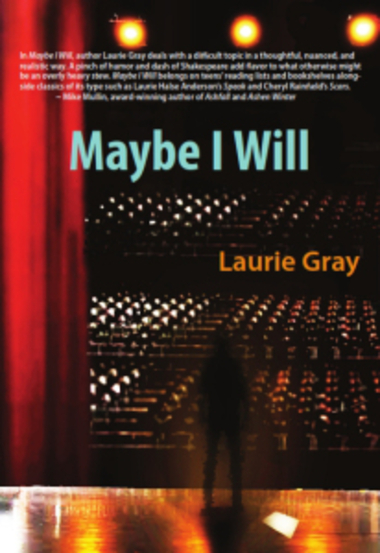"What's in a Name?" Ex-prosecutor's novel explores assault biases

CINDY LARSON, The News-Sentinel
FORT WAYNE, Ind. (AP) — What's in a name?
Well, if it's "Sally," or "Mary," or "David," or "Steve," there can be a lot of assumptions, just based on the name and the gender the name suggests.
But what about the name "Sandy"? What if you've never met Sandy, and don't have any clue as to whether Sandy is male or female?
Say you hear a story about Sandy being sexually assaulted. Are your assumptions different based on whether you perceive Sandy as male or female?
These are the questions Laurie Gray hopes people think about as they read her new young adult novel, "Maybe I Will."
Gray was an Allen County deputy prosecuting attorney from 2000 to 2010. She has prosecuted felony sex crimes in adult and juvenile court, and currently works as a bilingual child forensic interviewer at the Dr. Bill Lewis Center for Children, where children who have been victims of sexual crimes tell adults what happened to them.
"Maybe I Will" is about a 16-year-old teen, Sandy, who is sexually assaulted. The incident changes Sandy from an outgoing teen to a confused victim who turns to alcohol. Sandy's closest friends respond negatively, deserting him/her. The story continues on with Sandy eventually finding healthy forms of self-expression and discovering personal empowerment.
The idea for the novel came from a poem Gray wrote in high school called "My Character," The News-Sentinel reported (http://bit.ly/ZQVzDN ). She shared it with a book writer's group, and one of her writer friends said it was almost as if there was an entire novel in the poem. She decided to research her character while reading "The Complete Works of Shakespeare" and became intrigued with the fact that in Shakespeare's time, all the characters, even the women, were played by men.
Each chapter of "Maybe I Will" begins with a quote from Shakespeare, which either foreshadows the chapter or provides deeper context.
In the book, Gray wanted to convey the message that any sexual assault, whether it happens to someone who is male or female, is not about sex. "Sexual assault is about assault," she said. "We get all turned around. We don't see it for the violence that it is so often."
Gender bias comes into play as well. Gray said when she was a deputy prosecuting attorney handling juvenile sex offenses, she'd find herself questioning her own gender biases. She would ask herself if she would feel differently about a case if the gender of the victim and suspect were reversed.
In real life - and for readers of the book - if the victim is perceived as female there may be a tendency to believe she consented to the assault. However, when a victim of a sexual assault is male, people may tend to perceive it as a hazing incident, or they may assume the victim — or in the case of the book, Sandy — is gay, Gray says.
"I wanted my main character to be human and I wanted us to realize that we still do have an awful lot of gender bias," she said. "We judge people differently based upon their gender."
"Maybe I Will" was released March 15, the same day the sexual assault occurs in the book. But the timing of the release just before April, which is National Sexual Assault Awareness Month, is even more significant.
Gray and Michelle Ditton, chief nursing officer of the Fort Wayne Sexual Assault Treatment Center, recently co-presented a workshop at the National Symposium on Child Abuse in Huntsville, Ala. Titled "Sexual Assault: Fact and Fiction," Ditton addressed physical and forensic facts, and Gray looked at legal and literary fictions. She used examples from her book and other young adult literature dealing with similar issues in her presentation.
Although the book deals with serious and sensitive subject matter Gray says "Maybe I Will" is appropriate for ages 13 and up. She believes it could be used as a teaching tool. She said it's not that graphic, there's no profanity, and she stressed again, "It's sexual assault. It's not sex. It's a crime. It's violence."
She added, "As a prosecuting attorney, I've talked to 4-year-olds who've been through more than that."
___
Information from: The News-Sentinel, www.news-sentinel.com
Publishable Editors Notes: This is an AP Member Exchange shared by The News-Sentinel.





